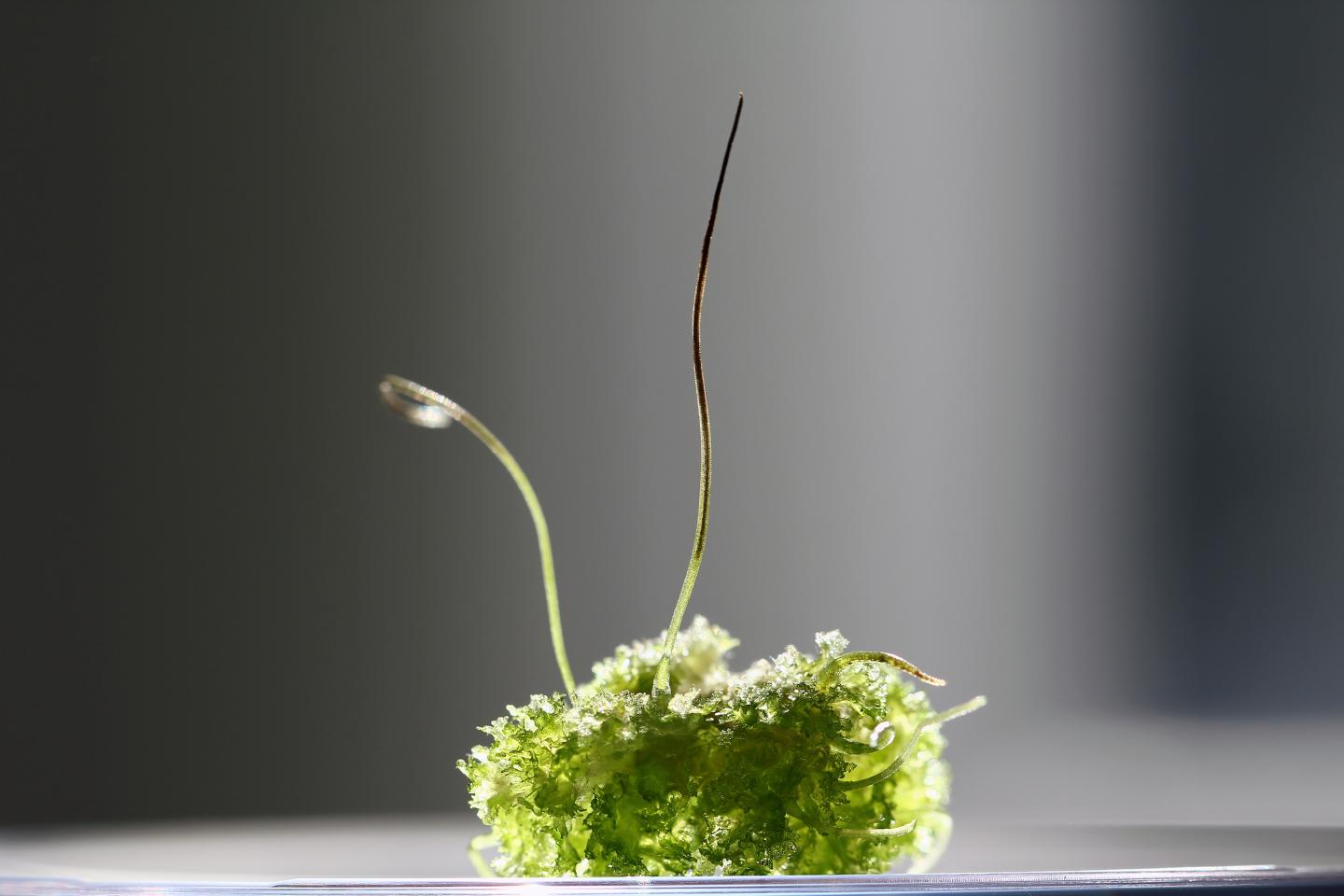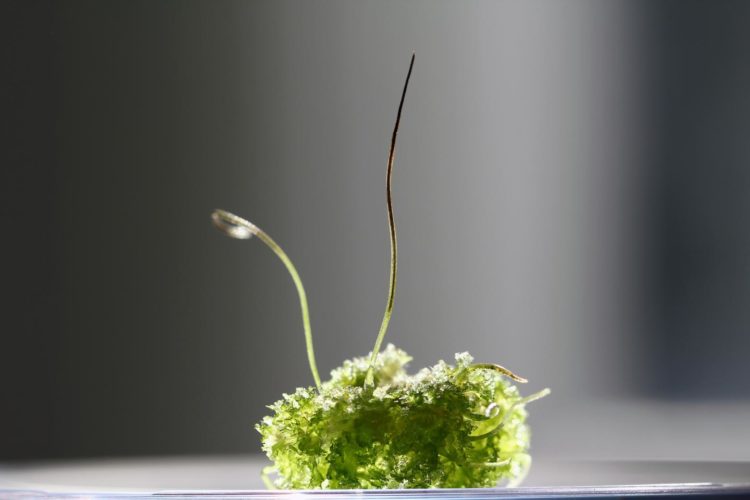
Credit: Eftychis Frangedakis
Some 500 million years ago – when our continents were connected in a single land mass and most life existed underwater – hornworts (Anthoceros) were one of the first groups of plants to colonize land. An international team led by University of Zurich (UZH) and the Boyce Thompson Institute has now sequenced three hornwort genomes, providing insights into the genetics underlying the unique biology of the group, an extant representative of the earliest land plants.
The research team began the project in 2011. “It took us three years to figure out how hornworts can be grown and pushed through its sexual life cycle under laboratory conditions, and another three years to properly assemble and annotate its genome,” says Péter Szövényi, researcher at UZH and last author of the paper.
Higher crop yields with less fertilizer
One of the researchers’ goals was to find genes that play a role in hornworts’ method of concentrating carbon dioxide inside chloroplasts, which boosts the plants’ ability to make sugar resulting in increased yield. Hornworts are unique among land plants in this capability, but some species of algae share the trait. The researchers thus compared the hornwort genomes with those of algae and found one gene, LCIB, that is shared by the two groups of plants but not with other land plants. “If this carbon-concentrating mechanism could be installed in crop plants, then they could grow larger with the same amount of fertilizer,” explains first author Fay-Wei Li, plant biologist at the Boyce Thompson Institute and Cornell University.
Symbiosis with bacteria to acquire nitrogen
Furthermore, hornworts live in symbiosis with fungi and cyanobacteria providing phosphorus and nitrogen to the plant. The researchers also identified 40 genes that may promote the hornworts’ source of nitrogen, which comes from an interdependent relationship with cyanobacteria – a unique feature in land plants. “If this capability of hornworts can be transferred to crop plants, many tons of nitrogen fertilizer could be saved,” says Szövényi. Such a reduction in fertilizer could benefit the environment, since excess agricultural nitrogen frequently enters waterways, where it can cause deadly algal blooms. Szövényi and Li are already working on a project to understand the genetic mechanism underlying the symbiotic plant-cyanobacteria interaction.
Illuminating the origin of land plants
The research also shed light on the evolution of early land plants. Without stomata, most plants cannot take up carbon dioxide and thrive in the terrestrial environment. Therefore, stomata represent a key innovation in colonization of the terrestrial environment. Nevertheless, until now it was unknown whether stomata have evolved once or potentially multiple times independently in land plants. Hornworts possess stomata during their spore-producing phase. “We found that the basic genetic toolkit governing stomatal development in flowering plants is shared with hornworts,” explains Szövényi. This finding is consistent with the hypothesis that stomata have evolved only once in the most recent common ancestor of land plants.
Hornworts, liverworts and mosses were among the first plants to colonize land, but how the three groups were related had previously not been clear. “Our research shows clearly that hornworts, liverworts and mosses are all more closely related to each other than they are to vascular plants. We also show that liverworts and mosses are more closely related to each other than to hornworts,” says Fay-Wei Li.
###
Media Contact
Péter Szövényi
[email protected]
41-446-348-440
Original Source
https:/
Related Journal Article
http://dx.





